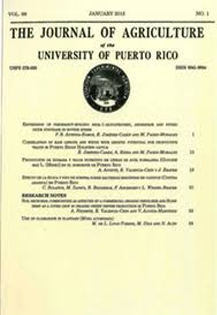Abstract
Sun cured hays of two legumes, forage soybean (Glycine max L. Merr.) cv. ‘Hinson Long Juvenile’ and Lablab [Lablab purpureus (L.) Sweet] cv. ‘Rongai’, were compared in terms of voluntary intake and digestibility of dry matter (DM), crude protein, and neutral detergent fiber, in six individually caged lambs (28.4 ± 4 kg body weight). Treatments were arranged in a completely randomized design with three replicates (animals). The lambs were fed periodically during a seven-day adaptation period, and data collection was carried out over five days. ‘Hinson’ and ‘Rongai’ did not differ in crude protein (15.8 vs. 15.5%) and neutral detergent fiber (56.2 vs. 55.1% of DM). Lambs fed cv. ‘Hinson’ consumed more DM (P<0.05) than those fed ‘Rongai’ (945 vs. 853 g/d). ‘Hinson’ also registered higher DM digestibility (56.2 vs. 49.6%) than ‘Rongai’. Based on their agronomic characteristics, chemical composition, voluntary intake, and digestibility, both legumes exhibit good potential for use as hay. Large-scale planting of these legumes could supply hay for ruminant feeding to supplement low quality tropical grasses and reduce the need for imported protein sources for ruminant feeding.

